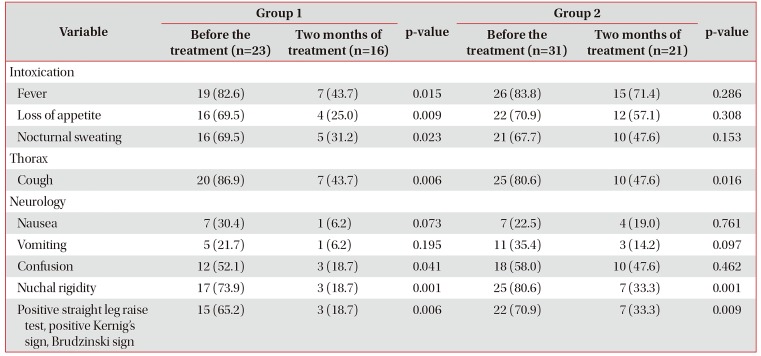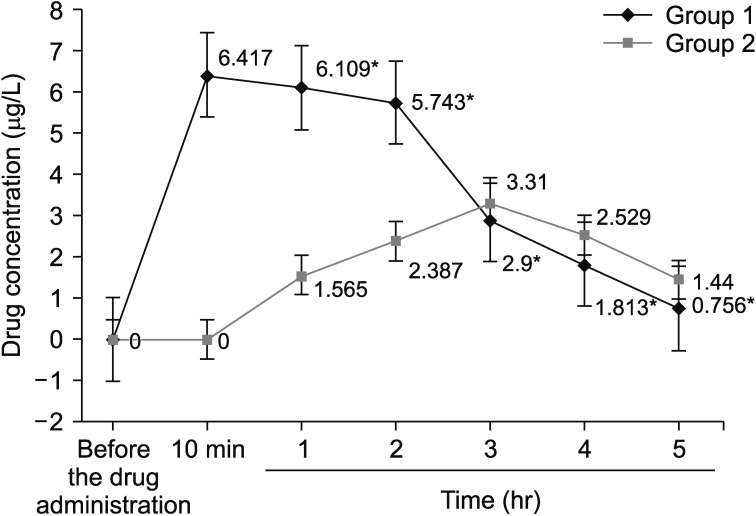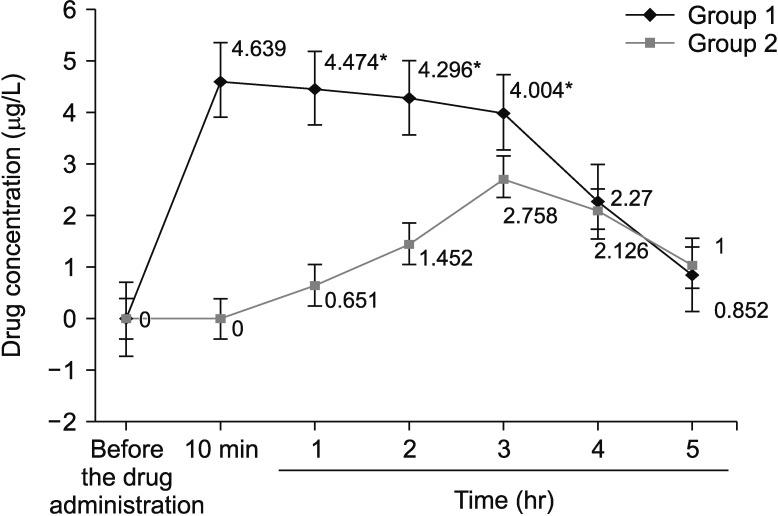1. Sanchez YP, Rodriguez DR. Tuberculosis meningitis, still misunderstood. J Neuroinfect Dis. 2015; S2:005.

2. Mai NT, Dobbs N, Phu NH, Colas RA, Thao LT, Thuong NT, et al. A randomised double blind placebo controlled phase 2 trial of adjunctive aspirin for tuberculous meningitis in HIV-uninfected adults. Elife. 2018; 7:e33478. PMID:
29482717.

3. Thwaites GE, van Toorn R, Schoeman J. Tuberculous meningitis: more questions, still too few answers. Lancet Neurol. 2013; 12:999–1010. PMID:
23972913.

5. Gao M, Gao J, Du J, Liu Y, Zhang Y, Ma L, et al. Efficacy of ultra-short course chemotherapy for new smear positive drug susceptible pulmonary tuberculosis: study protocol of a multicenter randomized controlled clinical trial. BMC Infect Dis. 2017; 17:435. PMID:
28629333.

7. Ruslami R, Ganiem AR, Dian S, Apriani L, Achmad TH, van der Ven AJ, et al. Intensified regimen containing rifampicin and moxifloxacin for tuberculous meningitis: an open-label, randomised controlled phase 2 trial. Lancet Infect Dis. 2013; 13:27–35. PMID:
23103177.

8. Butov DO, Zaitseva SI, Pitenko MM, Stepanenko GL, Butova TS. Morphological changes in experimental tuberculosis resulting from treatment with quercetin and polyvinylpyrrolidone. Int J Mycobacteriol. 2015; 4:296–301. PMID:
26964811.

9. Begley DJ. Delivery of therapeutic agents to the central nervous system: the problems and the possibilities. Pharmacol Ther. 2004; 104:29–45. PMID:
15500907.

10. Butov D, Feshchenko Y, Kuzhko M, Gumeniuk M, Butova T. Efficacy and safety of intravenous chemotherapy during intensive treatment phase in patients with newly diagnosed pulmonary tuberculosis. Adv Respir Med. 2018; 86:159–167.

11. World Health Organization. WHO case definitions of HIV for surveillance and revised clinical staging and immunological classification of HIV-related disease in adults and children. WHO/PDF/TB/2006 [Internet]. Geneva: World Health Organization;2006. cited 2006 Aug 7. Available from:
https://www.who.int/hiv/pub/vct/hivstaging/en/.
13. World Health Organization. HIV/AIDS treatment and care: clinical protocols for the WHO European Region. WHO ER/PDF/TB/2007 [Internet]. Geneva: World Health Organization European Region;2007. cited 2018 Sep 26. Available from:
https://www.who.int/hiv/topics/idu/care/E90840.pdf.
15. Erokhin VV, Kornilova Z, Alekseeva LP. The specific features of the detection, clinical manifestations, and treatment of tuberculosis in the HIV-infected. Probl Tuberk Bolezn Legk. 2005; 20–28.
16. Tsymbalar GG, Botoshanu E, Roshka SN, Burinskaia LP. Clinical picture and treatment of tuberculous meningitis in adults. Probl Tuberk. 1983; (3):51–53.
17. Lapach SN, Chubenko AV, Babich PN. Statistical methods in biomedical studies using Excel. Kyiv: Morion;2000.
18. Donald PR. Cerebrospinal fluid concentrations of antituberculosis agents in adults and children. Tuberculosis (Edinb). 2010; 90:279–292. PMID:
20709598.

19. Pouplin T, Bang ND, Toi PV, Phuong PN, Dung NH, Duong TN, et al. Naive-pooled pharmacokinetic analysis of pyrazinamide, isoniazid and rifampicin in plasma and cerebrospinal fluid of Vietnamese children with tuberculous meningitis. BMC Infect Dis. 2016; 16:144. PMID:
27039088.

20. Nguyen DT, Jenkins HE, Graviss EA. Prognostic score to predict mortality during TB treatment in TB/HIV co-infected patients. PLoS One. 2018; 13:e0196022. PMID:
29659636.

21. Kimerling ME, Phillips P, Patterson P, Hall M, Robinson CA, Dunlap NE. Low serum antimycobacterial drug levels in non-HIV-infected tuberculosis patients. Chest. 1998; 113:1178–1183. PMID:
9596291.

22. Alsultan A, Peloquin CA. Pharmacokinetics and pharmacodynamics of isoniazid in patients with intermediate resistance. Int J Tuberc Lung Dis. 2017; 21:121–123. PMID:
28157477.

23. Bekker A, Schaaf HS, Draper HR, van der Laan L, Murray S, Wiesner L, et al. Pharmacokinetics of rifampin, isoniazid, pyrazinamide, and ethambutol in infants dosed according to revised WHO-recommended treatment guidelines. Antimicrob Agents Chemother. 2016; 60:2171–2179. PMID:
26810651.









 PDF
PDF ePub
ePub Citation
Citation Print
Print





 XML Download
XML Download